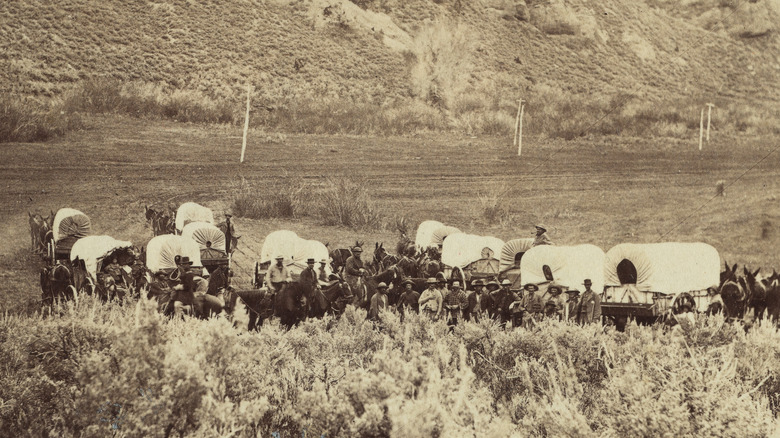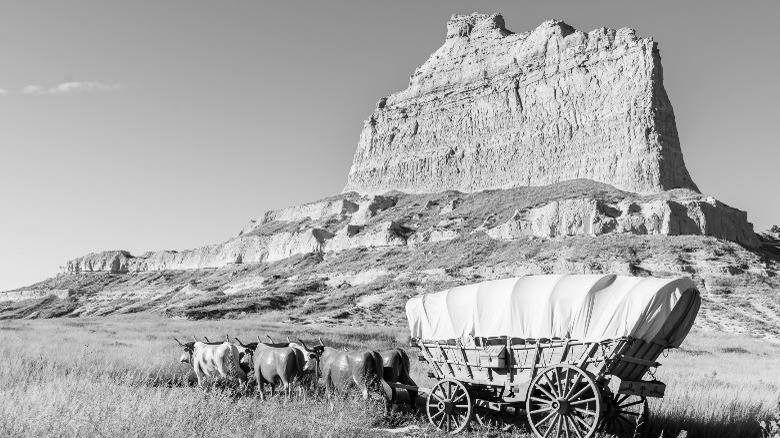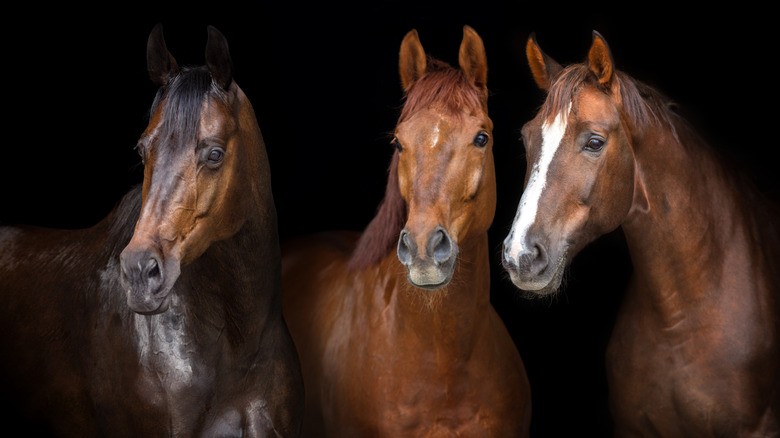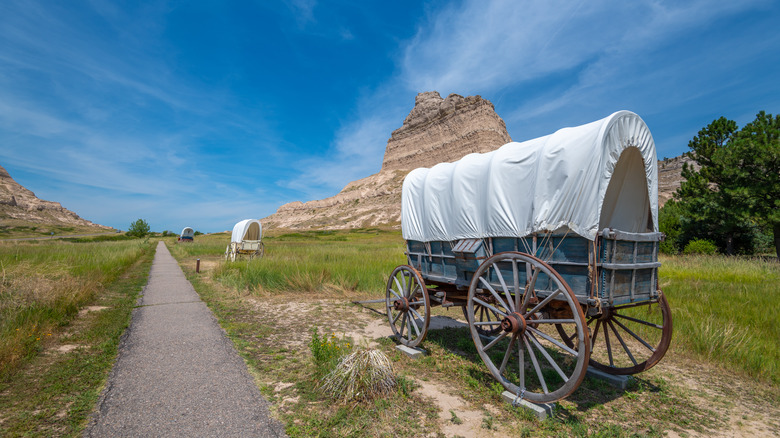The Real Reason People Rarely Rode In Wagons On The Oregon Trail
Almost from the moment Europeans first landed in North America, they wanted to keep moving and exploring the vast lands before them. Per Smithsonian Art Museum, the concept of westward expansion really took off once Thomas Jefferson negotiated the Louisiana Purchase in 1803, which essentially doubled the size of the country overnight. In a few short years, the Lewis and Clark expedition reached the Pacific Ocean. Journeys like this and others resulted in what we know today as the Oregon Trail, according to Oregon Encyclopedia.
In the early 19th century, people only had so many ways to travel, especially to go long distances. Mostly, people walked, but sometimes you had a horse or a mule. Other times, you might be able to get your hands on a wagon. With the explosion in the number of families looking to move west, wagons quickly became the top choice for their cross-country journeys. As described by the California/Oregon Trail Center, the most popular type of wagon was known as a prairie schooner, and it needed to be strong and sturdy, as well as light enough to not tax whatever animal was pulling it.
Not all wagons were the same
It is a common misconception that all wagons the pioneers used were all the same. In reality, travelers had a choice between two different types of wagons. A wagon known as a prairie schooner got its name from the white cover over the back that when viewed from a distance resembled the sails of a type of boat called a schooner, per Britannica. This type of wagon was lighter and smaller than its counterpart, which made it more suited to long distance travel. Per the California/Oregon Trail Center, the Oregon Trail is 2,000 miles long, which would take months to travel, so a smaller vehicle was theoretically more practical for the journey.
The other type of wagon available was known as a Conestoga wagon, writes the California/Oregon Trail Center. This type of wagon was definitely more formidable and heavy duty than the prairie schooner. Its original design and purpose was for hauling various types of freight over land. Though the Conestoga has similar features to the prairie schooner, such as the canvas top (bonnet), but there were also a couple of differences as well.
Size did matter
The Conestoga's size and structure of the box was different from the schooner, as it was larger, and the shape was not completely flat in order to keep cargo from bumping around. Due to the increased carrying capacity, this would mean its structure is heavier and the amount of weight it could handle is bigger.
This bad boy reportedly carried up to 6 tons and often required a full team of horses to pull it (via Britannica). Turns out, these animals didn't happen to be just any horses. They used special ones, known as Conestoga horses, that were bred for this kind of work, per History. These creatures were described as "docile and strong" and had the ability to travel up to 14 miles at a time, which made them ideal for towing heavy loads. Despite the potential advantages of such a sturdy rig and the perfect animals to move it, the dimensions, design, and additional weight made this particular style of wagon less than ideal for cross-country travel.
It really was a bumpy ride
Photographs and paintings we see today of these wagons going across the country often show us a couple of things. One of those is a fully packed wagon. This would make sense because these travelers are literally picking up their entire lives and lugging it thousands of miles to a new home. Inside these wagons they had as many of their necessities and prized possessions as possible. However, you don't see them stuffed to the brim. Though they carried everything these people had in the world, prairie schooners also couldn't be too heavy, as it could hurt the animal that was towing it or cause damage to the wagon itself, per California/Oregon Trail Center.
Some folks riding in the wagon is the other thing that frequently appears in imagery of those traveling the Oregon Trail. Usually they are women or possibly children that are just riding in the wagon on their way toward their destination. It turns out that people actually did not ride in wagons very often at all. One obvious reason for this is that the wagons were already full, as discussed above. The other is that this particular type of wagon (prairie schooner) is reportedly extremely uncomfortable due to the lack of springs or suspension systems to help smooth out the ride. Therefore, it would be more common for travelers to walk alongside wagons instead of traveling inside them.



